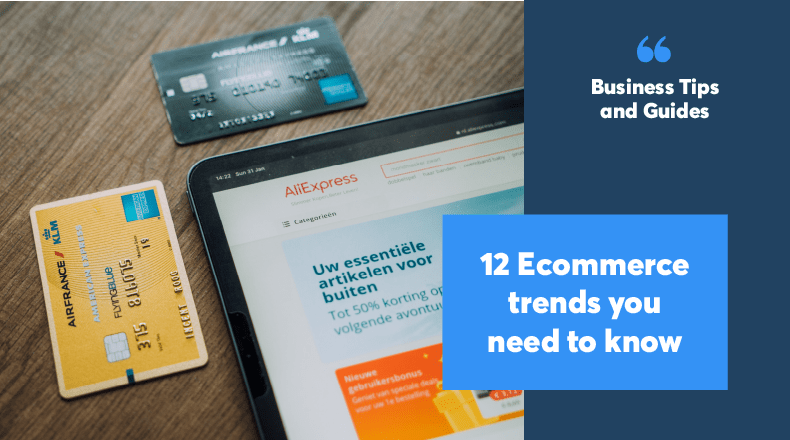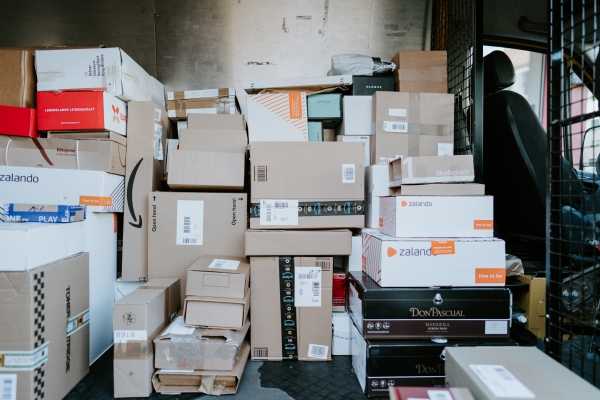2020 was a big year for online businesses. After a year of unprecedented sales growth, online businesses are now trying to capitalise on current ecommerce trends and make pandemic online shopping habits stick.
While ABS data reveals a third of us prefer to do more of our shopping online than before the start of the pandemic, innovative ecommerce companies know they can do more to convert one-time online shoppers into regulars.
To find out how the latest ecommerce innovations are driving retail market developments, and anticipate headwinds as well as ecommerce opportunities, take a look at our list of top 2021 ecommerce trends.
1. Retail giants up their game
One of the first major ecommerce trends has happened is the shift from physical retail to ecommerce. The competition for online sales by retail and ecommerce stores is intensifying. Brands that traditionally focused on in-store shopping – like IKEA, Bunnings and K-mart – have started to merge digital and offline shopping during lockdowns by providing services like “click and collect” and “drive and collect”.
Despite the reopening of physical stores, retail giants have deep pockets and will likely continue their efforts to stay relevant, improve their customer experience and grow their ecommerce presence.
2. People are buying from abroad
As if the online retail market isn’t crowded enough, an ever-growing ecommerce trend is competition coming from businesses abroad. According to Shopify, Australia ranks fifth in cross-border ecommerce, revealing just how comfortable Australians are to buy from different countries.
Shopify also reports a spike in usage of translation, dropshipping and currency conversion apps during and post pandemic, exposing the ways in which online shoppers break down language and other barriers when buying overseas.
3. Demand for household essentials and personal care drops.
Experienced ecommerce businesses know this instinctively – the fastest growing ecommerce trend today could slow down literally overnight.
While household essentials, groceries and personal care product categories were high in demand during the pandemic, NAB’s Online Retail Sales Index has shown over recent months their demand is tapering off.
4. Customers want solutions, not brands
As Shopify reports, half of all global ecommerce sales occur on virtual marketplaces like Amazon and eBay. With this level of transaction volume taking place, brands need to have a solid marketplace presence to widen their reach.
Marketplace trends tell us that customers aren’t seeking out brands, but solutions to their problems. Seven in 10 searches on Amazon are brandless and nine in 10 product views result from search rather than branded ads or merchandising. This means for your ecommerce innovation you may want to invest in product pages with quality content. This content built around solutions could be key to brand building and making it easier for customers to find you.
5. Fast digital shopping is key
In line with ecommerce innovations over recent years, Shopify confirms that today’s consumer expects an intuitive and consistent experience across channels and devices. Having a tangible product isn’t enough – the online purchase experience must be spot on as well.
Delivering a fast shopping experience on mobile devices is especially crucial as they account for 50% of global ecommerce sales. There’s little room for delay – unless your site is loaded on a mobile within three seconds, half your potential customers will abandon your site.
6. Prioritising safety and convenience
The Australia Post eCommerce Industry Report points out that a key challenge for online retailers is to get purchases to shoppers where and how they want them, and as quickly as possible.
Although home delivery is still the most widely used option for Australia Post customers, the increase of alternative collection points signals a shifting ecommerce trend. Customers desire for ways to collect purchases, such as from a store, newsagent, PO Box, etc.
Since staying COVID-Safe a priority for many, offering additional fulfilment options like curbside pick-up, click and collect and local delivery would allow you to balance customer expectations for more ways to collect, speed and convenience.
7. Fast and sustainable shipping
The growth of on-demand food delivery and ride-sharing in Australia sowed the seeds for same-day retail deliveries. With food delivery companies like DoorDash partnering up with local brands, Australian consumers are now getting their parcels faster than ever before.
But while consumers want their shopping quickly delivered, data from a recent Mastercard study reveals over half of us also want brands to be more sustainable. To this end, online retailers could embrace these ecommerce trends and innovate by re-evaluating shipping materials and adopt zero-waste or minimalist packaging.
8. Live-streaming shopping events
Live-streaming shopping events are becoming more commonplace overseas. The idea is to provide viewers with interactive, real-time opportunities to see items on sale, chat with hosts and stylists, and simply make their purchase in a few clicks.
9. Driving conversion with AR
Innovative ecommerce companies are simulating in-person shopping experiences through augmented reality. AR helps customers see how a product might look on them or fit in their world. To create the illusion that the item is part of their physical reality, all they have to do is click on a product and point their mobile device in the right direction.
This visual approach is a powerful way to engage customers and help complete their purchase.
10. Exploring new channels
Saturation and intense competition on Instagram and Facebook has fueled the overseas rise of new channels like voice shopping, connected TV, and messaging apps. Whilst still in their infancy stages in Australia, these potential new innovative ecommerce channels are worth keeping an eye out for.
11. Making it personal
Personalisation is about paying attention to who your customer is, then providing an experience based on what you know about the individual. It requires you to connect with your customers and add a human touch.
Though the concept isn’t new, companies are moving toward having a personalisation strategy across all channels, from website, email, mobile, face-to-face marketing, loyalty programs, and in-store POS.
12. Retention comes first
Finally, global ecommerce experts are noticing a shift amongst companies to prioritise customer retention ahead of customer acquisition.
Put simply, businesses are recognising that acquiring new customers is both difficult and expensive due to higher advertising costs and the fierce competition for online attention. Many are turning to high impact retention strategies like subscription models, loyalty programs and rewarding high-value customers with special offers.
Subscription services such as Amazon Prime and Ebay Plus are often at the forefront of these discussions. The free expedited delivery and additional bonuses they offer keep their customers buying all year round.
Need help riding the wave of ecommerce trends?
Bound with exciting opportunities, ecommerce has emerged as the global economic sweet spot. If you’re interested in leveraging the latest e trends to take your ecommerce business to the next level, POP can help you. We’re not just expert tax accountants – we’re always in-the-know and ready to deliver savvy advice. Contact POP on 1300 180 630 for smarter decisions and watch your business grow!




